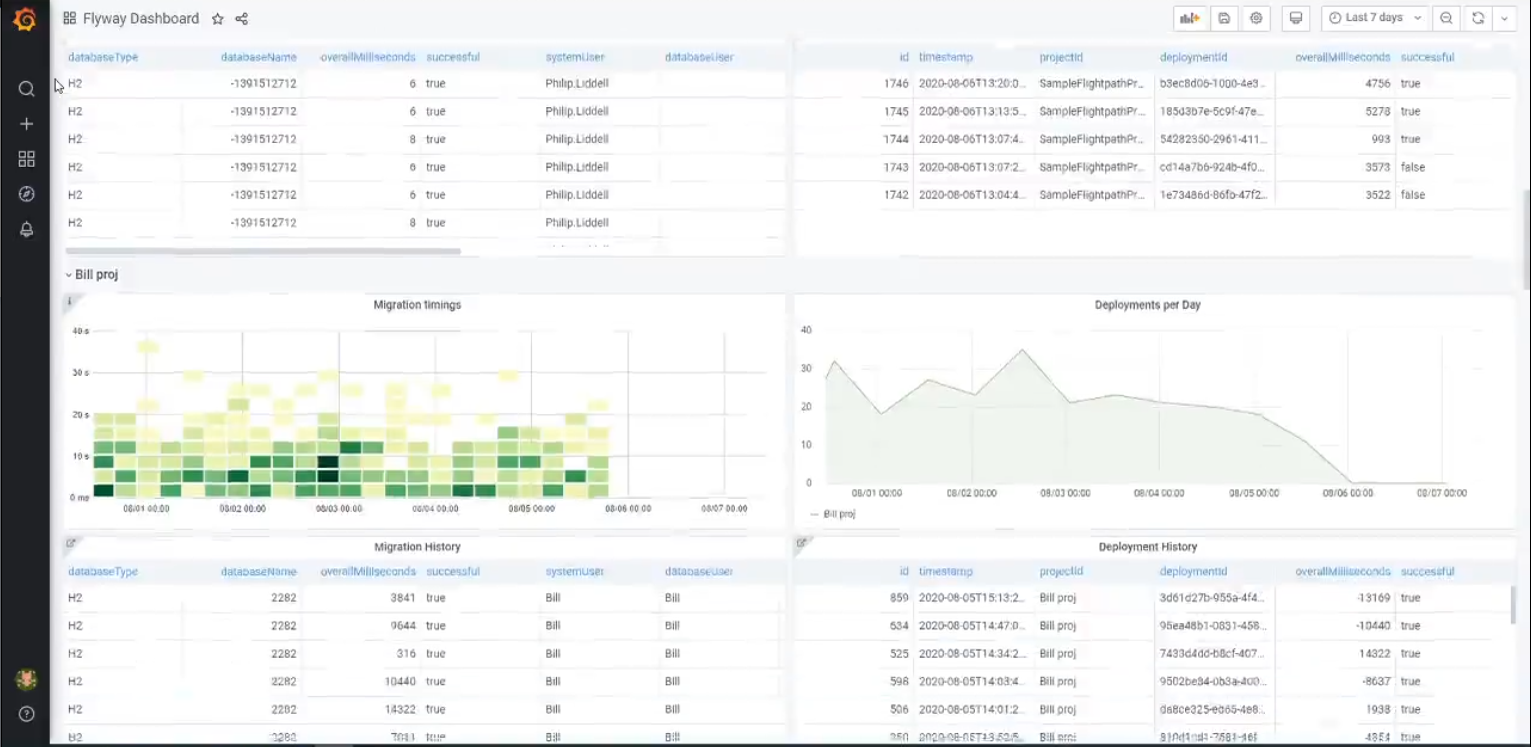A first view of Flightpath
Once a year at Redgate we hold Down Tools Week. It’s our hack week, when we temporarily put aside our normal work and form ad-hoc teams to propose, vote on and tackle new problems. Last time one team took a look at database provisioning in tandem with Flyway. This year, as knowledge about Flyway has spread through the company there were quite a few proposals for it to be involved in various projects in one form or another. One of our successful ones has come to be known as Flightpath.

At Redgate we’re very keen on the Accelerate metrics as a measure of a development team’s performance. They are:
- deployment frequency – how often do you ship?
- change failure rate – how often do you have to roll back what you shipped?
- mean time to recovery – how long does it take to get back to stability?
- cycle time – how long does it take from starting work on a feature to it being in users’ hands?
We use these metrics within the Flyway team, and it’s pushed us to maintain a frequent release cadence, react quickly to problems in new releases and work on our internal processes so that actually doing releases is fast and easy.
Of course, the whole purpose of Flyway is to make deploying the database element of your software easy, reliable and undoable – that is, to make your organisation’s metrics improve! But it would be even better if you and your organisation can visualise these metrics easily; Flyway stores historic intelligence about deployments in its history tables, and providing a way to see this will both give you insight into your deployment process, as well as potentially helping us to understand our end-users – you – better and meet your needs. The database, of course, is not the only component of your systems, but the frequency with which you do migrations, and the times at which you use undo scripts on a production database, are useful proxies for the overall metrics.
We started off by surveying a number of you to gauge what interest there might be. Two thirds of you are comfortably deploying database changes weekly or faster – that’s great! Topics that featured heavily were providing information for audit purposes and assessing failure rates and the need for rollbacks.
We decided that Flightpath would not be a part of Flyway itself, but a separate plugin that can be dropped in much like a callback. This means Flightpath is entirely optional, doesn’t affect the Flyway engine itself, and prevents any privacy concerns. The idea is that when you carry out Flyway operations such as migrations and rollbacks, the Flightpath plugin will send anonymised information to a custom dashboard, or an off-the-shelf graphing tool; we used Grafana.

Flightpath would also collect up aggregated metrics that will help us get a better understanding of how Flyway is used, which in turn would feed into our decision making when we’re looking at how to develop Flyway in future.
By the end of the week we had the Flightpath plugin running happily inside a demonstration Flyway instance, and our platform was picking up data and producing charts. The competitive element of the week requires a working demo on Friday afternoon, and we got there with time to spare!

There is a lot of work ahead before Flightpath takes off – getting more feedback around our prototype dashboard designs; investigating options around free shared public platforms, private pipelines and self-hosted platforms for larger enterprises; and providing documentation and support so that it’s as easy to adopt as Flyway itself. If you’re interested in knowing more, or taking part in future research, please do get in touch, we’d love to hear from you!